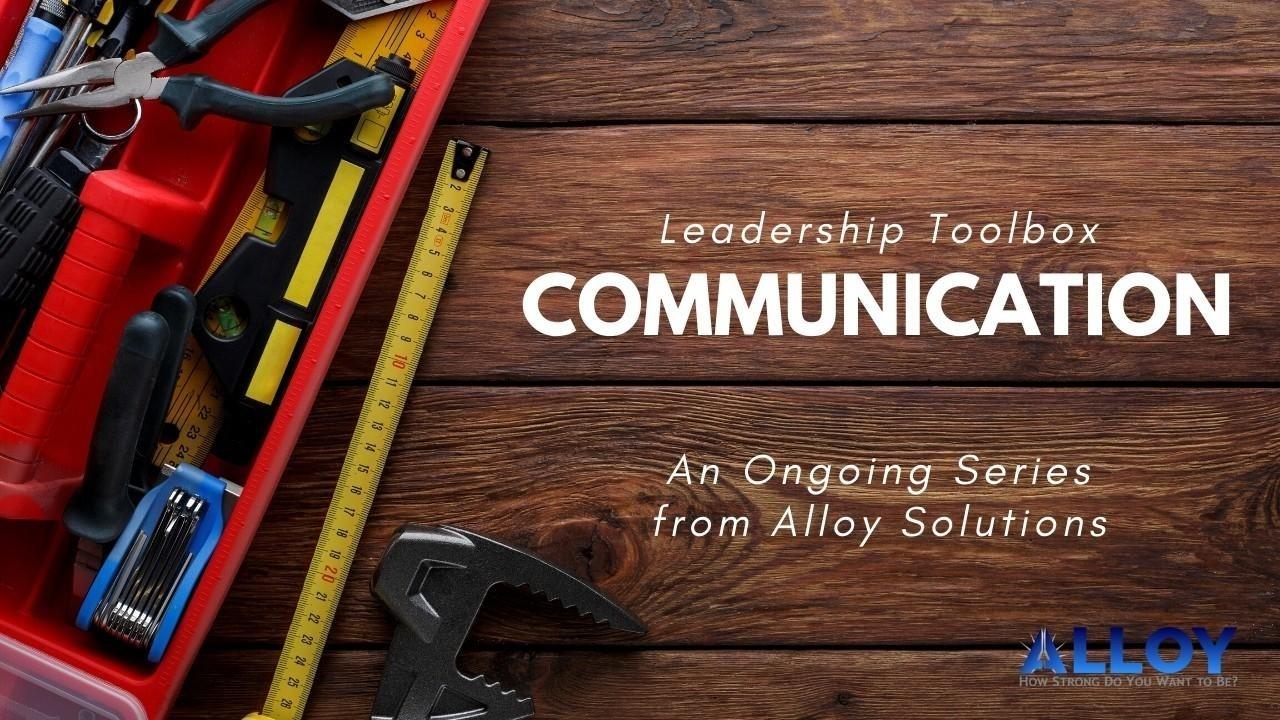Leadership Toolbox: Communication Part 3

Communicating Like a Leader (Part III), by Jamie Hansen
This is the third and final piece in a series from Jamie Hansen, focused on how a new leader must develop his or her communication skills in order to maximize their impact. You can find the first installment here, the second installment here, and receive the rest of the series in your inbox by subscribing to our newsletter.
Welcome back to the Leadership Toolbox! This series focuses on skills that leaders should develop in order to maximize their effectiveness. Whether you are a new or experienced leader, these skills will increase your influence as you connect with the people around you. We have highlighted four critical skills already, and we have two more to complete this list:
5. Connecting with Curiosity
Great communicators have learned, often the hard way, how assumptions can throw a conversation into a downward spiral. Our desire for efficient conversation, combined with past experience with another person, can spin into a cloud of assumptions that may not necessarily be true. Sometimes this happens with the best of intentions - we know the person well, and we believe we could guess their response 95% of the time. Sometimes our intentions are not as pure - we assume they oppose our argument and we just don't want to hear it (again).
Effective communicators know that just as curiosity killed the cat, it can also kill unchecked assumptions. (Presumably, they're also more interested in killing the latter than the former.) Intentionally stepping into conversations with curiosity about the party's perspective - on this day, in this situation - drastically increases the chances of a positive outcome. This is especially true when the stakes are raised or emotions are running high.
Focus on letting the other person tell you where they're coming from as if you are fresh on the scene. This communicates respect and interest, and it can slash through so many unnecessary (and often incorrect) assumptions. Try this with someone and see what happens. As with anything else, it may feel awkward at first but you will be glad you did.
6. Asking Questions with Intention
This is related to the points on curiosity, but it really stands alone as an important approach in our communication. Be conscious of your role in communicating to your team. Are you doing more "asking" or "telling" with your team? What approach have your leaders taken with you?
If we are honest, most of us have seen a "telling" approach to leading others, and we have inadvertently adopted this approach in our own leadership. Leaders are supposed to have the answers and get results, right? Taken too far, this bad habit can make us short-sighted, too quick to respond, too narrowly focused, and even abrupt in our interactions. Consider the leaders around you. Have you learned more from the leaders who told you "what you should do" to solve your problem, or from the leaders who asked you questions about your take on the problem? Looking back on those conversations, which leaders did you recall as wiser and more approachable?
Do not be alarmed if you find that you have fallen into this "telling" approach yourself. The key is to recognize it and learn a new approach to key conversations with those you lead. As you become more comfortable with this revised approach, you may find that your conversations create an even larger impact in the long run.
So, there we have it. From "communication" as a nebulous but universally-praised leadership quality, to six digestible components. For the senior leaders: how much would it have helped you if you had seen this breakdown earlier in your career? For the newer leaders: how much more effective can you be if you learn how to communicate well, and not just that you need to do it?
The great news is that no one ever truly arrives. As we improve, we see new opportunities for additional growth, with relationships and results improving as we go. So keep learning, keep growing, and keep encouraging others in their growth. There is no "point of diminishing returns" when it comes to improving our communication skills.
Questions for the author? Contact us today at [email protected]! Make sure to get the latest installments from Jamie by subscribing to our newsletter!

